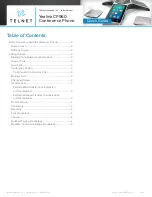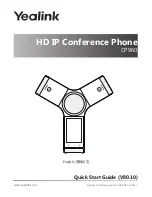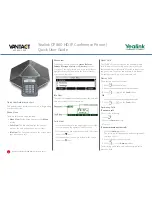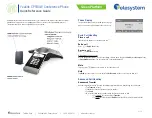
CHAPTER 18: Taking Photos and Videos
366
However, if your job does not require professional high-end photography or video, it is
entirely possible to use your phone for these purposes, and avoid having to carry around
of two or three separate devices.
Megapixels and Image Size
Each square on a monitor or phone display is a pixel. A megapixel is a million pixels, or
1000
1000 pixels. Webcams are generally either a low-quality .3 megapixels (close to
the size of old standard-definition television broadcasts) or 1.3 megapixels, the size of
an SXGA (1280
1024) monitor. Neither of those is large enough to yield satisfying print
results, because of yet another dimension, pixels per inch (ppi) (also called dots per
inch, or dpi).
When you display images on a monitor, 72 dpi looks fine. However, if you print that
same image, it will look horrible at that resolution. You’ll be able to see every pixel. If
you’re printing, you want an image somewhere around the 250 to 300 dpi range for
good print results; most professionals use 300 dpi as the standard. That means to get a
quality 8
10-inch photo, you need a camera with at least 5 megapixels for a 250 dpi
print and 7.2 megapixels for a 300 dpi print.
The Motorola DROID and DROID 2 cameras both have 5-megapixel cameras with flash.
The DROID X has an 8-megapixel camera, so both will handle 5x7 prints, and the DROID
X will do better for 8x10 prints. Some other smartphones have has an 8-megapixel
camera on the back and a 1.3-megapixel camera on the front for video conferencing,
and this may be something we’ll see from Verizon Wireless in future DROIDs.
Video resolution is lower than print resolution. High-definition (HD) video is at maximum
just slightly bigger than 2 megapixels. However, video struggles against the amount of
space it takes up, so most phones do not support HD video capture, and those that do
generally make some sacrifices. Full resolution HD video can be as large as 1080x1920
pixels at 60 frames per second. Needless to say, that’s not a resolution you’ll see on
phones at this point. Many entry-level video cameras don’t even support that rate.
The DROID X will shoot 720p at 24fps. That means it will shoot a video of 1280x720
pixels at 24
frames per second
. It also uses three microphones to capture better audio.
The DROID 2 will capture
standard-definition
video at 720x480 resolution and 30
frames per second. The DROID will capture the same
standard-definition
video at
720x480 resolution at up to 24 frames per second.
Focus
Point-and-shoot cameras come with either
fixed focus
or
autofocus
. Fixed-focus
cameras are optimized to take a photo with the same focus—usually from a couple of
feet to infinity. They use the same aperture opening and shutter speed for every single
picture. That means anything too close will be out of focus. This is the type of focus you
get with disposable cameras, because it’s cheap and doesn’t require any sort of
adjustment on the user’s end.
Summary of Contents for DROID 2 Global
Page 1: ...DROIDS Made Simple MartinTrautschold Gary Mazo Marziah Karch DROIDS ...
Page 3: ......
Page 25: ... ACKNOWLEDGMENTS xxii ...
Page 27: ......
Page 55: ......
Page 61: ...INTRODUCTION 36 ...
Page 63: ......
Page 121: ...CHAPTER 2 Typing Voice Copy and Search 96 ...
Page 151: ...CHAPTER 4 Other Sync Methods 126 ...
Page 213: ...CHAPTER 7 Making Phone Calls 188 ...
Page 245: ...CHAPTER 9 Email on Your DROID 220 ...
Page 349: ...CHAPTER 15 Viewing Videos TV Shows and More 324 ...
Page 367: ...CHAPTER 16 New Media Reading Newspapers Magazines and E books 342 ...
Page 415: ...CHAPTER 18 Taking Photos and Videos 390 ...
Page 493: ...CHAPTER 21 Working With Notes and Documents 468 ...
Page 529: ...CHAPTER 24 Troubleshooting 504 ...
Page 531: ......
Page 549: ...CHAPTER 25 DROID Media Sync 524 ...
Page 581: ...APPENDIX DRIOD App Guide 556 ...
Page 611: ......
Page 612: ......
Page 613: ...Index ...
Page 614: ......
Page 615: ...Index ...
Page 616: ......
Page 617: ...Index ...
















































